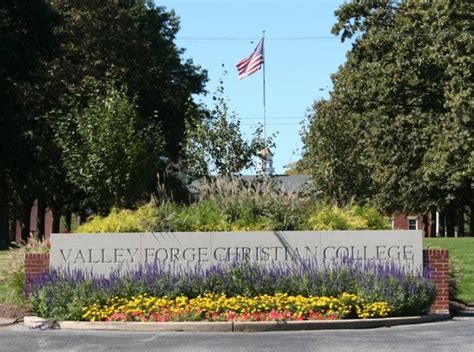The University of Valley Forge (UVF) offers students a comprehensive and transformative educational experience. However, understanding the financial implications is essential before embarking on this academic journey. This article delves into the various costs associated with attending UVF and provides strategies for managing expenses to make education more accessible.

Tuition and Fees
Tuition and fees constitute a significant portion of the overall cost of attendance. The university adopts a transparent pricing model, with tuition and fees structured based on the number of credit hours taken per semester. For the 2022-2023 academic year, the full-time undergraduate tuition rate for 12-18 credit hours is $31,380. Students enrolled in graduate programs can expect to pay $17,820 per year for a full course load.
In addition to tuition, several fees are associated with attendance, including:
- Student activity fee: $460
- Technology fee: $280
- Health services fee: $360
- Recreation and fitness center fee: $220
- Parking permit fee (optional): $150
Room and Board
The university provides on-campus housing for students seeking a residential experience. There are several residence halls with varying amenities and pricing options. For the 2022-2023 academic year, the average cost of a standard double room with a shared bathroom is $7,000. Meal plans are also available and range from $1,200 to $2,600 per semester.
Other Expenses
Beyond tuition, fees, and housing, other expenses need to be considered during the budgeting process. These include:
- Books and supplies: $1,000-$1,500 per year
- Transportation: Varies depending on commuting distance and mode of transportation
- Personal expenses: $1,000-$2,000 per year
- Health insurance (if not covered under parental plan): $1,000-$2,000 per year
Financial Aid and Scholarships
Understanding the university’s financial aid and scholarship options is crucial for managing expenses. UVF offers a range of financial aid programs, including federal grants, scholarships, and loans. To determine eligibility, students must submit a Free Application for Federal Student Aid (FAFSA).
For the 2021-2022 academic year, 98% of UVF undergraduates received some form of financial aid. The average financial aid package was $26,800, covering tuition, fees, and living expenses.
Scholarships are another way to reduce the cost of attendance. UVF offers a variety of merit-based scholarships, including the President’s Scholarship, Dean’s Scholarship, and Academic Excellence Scholarship. Students with outstanding academic achievements, extracurricular activities, or leadership experience may qualify for these scholarships.
Strategies for Managing Expenses
Managing the financial burden of college can be challenging, but several strategies can help:
- Explore payment plans: UVF offers monthly payment plans to spread out tuition costs throughout the semester.
- Apply for financial aid and scholarships: Submit a FAFSA and research scholarship opportunities early to maximize the chances of receiving assistance.
- Consider part-time work: Working part-time on or off campus can supplement income and reduce the need for loans.
- Budget wisely: Create a realistic budget and track expenses to ensure that essential needs are met without overspending.
- Take advantage of student discounts: Use student ID cards to access discounts on entertainment, travel, and other expenses.
- Consider living off-campus: While on-campus housing offers convenience, living in an apartment or shared home can be more affordable.
- Utilize campus resources: UVF provides free tutoring, counseling, and other support services that can help students succeed academically and financially.
Conclusion
Attending the University of Valley Forge comes with significant financial considerations. By understanding the costs involved, exploring financial aid options, and implementing effective money management strategies, students can make the most of their educational experience without overwhelming financial burdens. The university’s commitment to affordability and student success ensures that every student has the opportunity to achieve their academic and personal goals.
